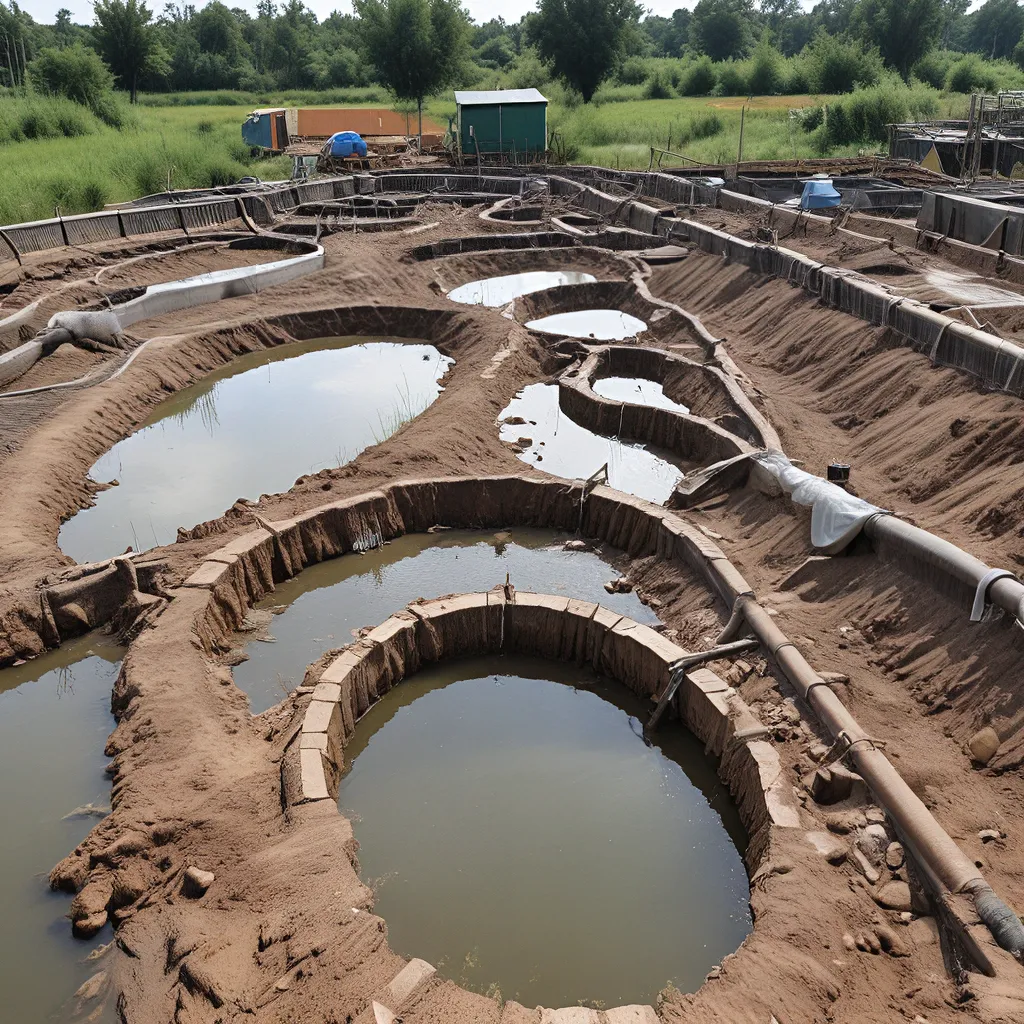
As an avid sustainability enthusiast, I’ve always been fascinated by the intersection of wastewater treatment and the global Sustainable Development Goals (SDGs). It’s a topic that not only impacts our immediate environment but also has far-reaching implications for the well-being of communities around the world.
Wastewater: The Unsung Hero of Environmental Protection
Let’s start with the basics. Wastewater treatment is the unsung hero of environmental protection, quietly working behind the scenes to safeguard our precious water resources. Think about it – every time you flush the toilet, take a shower, or do the dishes, that used water doesn’t just disappear. It’s part of a complex network of pipes, pumps, and treatment facilities that work tirelessly to remove contaminants and ensure that water is clean and safe before it’s released back into the environment.
But wastewater treatment is more than just a functional necessity – it’s a critical component of sustainable development. As the International Finance Corporation (IFC) points out, wastewater treatment is closely aligned with several key SDGs, including SDG 6 (Clean Water and Sanitation), SDG 3 (Good Health and Well-being), and SDG 11 (Sustainable Cities and Communities). By investing in and improving wastewater infrastructure, we can make significant strides towards these important global goals.
Bridging the Gap: Wastewater Treatment for All
One of the biggest challenges in wastewater treatment is ensuring that it’s accessible and effective for all communities, regardless of their economic or geographic circumstances. As the University of Minnesota’s Sustainable Development Goals Initiative points out, conventional wastewater treatment can be energy-intensive and complex, making it impractical for rural and under-resourced communities. This means that many people around the world still lack access to proper sanitation and are relying on outdated or inadequate methods for managing their wastewater.
But there’s hope on the horizon. Researchers are exploring innovative, low-tech solutions that can be leveraged globally to improve sanitation, such as wastewater treatment ponds. These natural systems harness the power of microorganisms to break down contaminants, offering a more affordable and sustainable alternative to traditional treatment methods. By understanding the complex microbiome that governs these ponds, we can unlock the secrets to their optimal performance and bring the benefits of wastewater treatment to communities that have historically been underserved.
Wastewater and the Bigger Picture
Of course, wastewater treatment is just one piece of the sustainable development puzzle. As the World Bank’s Sustainable Development Bond Framework highlights, the SDGs are an inherently integrative and interdisciplinary approach, highlighting the complex connections between issues like poverty, health, education, and climate change.
When it comes to wastewater treatment, we need to consider the broader context and how it fits into this larger sustainable development framework. For example, improved wastewater management can have cascading benefits for human health, reducing the risk of waterborne illnesses and improving overall well-being. It can also contribute to more sustainable and livable cities by reducing pollution and enhancing the quality of local water bodies.
At the same time, wastewater treatment is inextricably linked to energy consumption and greenhouse gas emissions. As we work to improve and expand these systems, we need to also focus on developing more energy-efficient and renewable-powered solutions to minimize our environmental impact. This is where innovative technologies and interdisciplinary collaboration will be key to unlocking the full potential of wastewater treatment for sustainable development.
A Future of Possibility
As I reflect on the intersections between wastewater treatment and the Sustainable Development Goals, I can’t help but feel a sense of cautious optimism. The challenges are significant, but the potential rewards are immense. By aligning our priorities and investments in this critical area, we can make tangible progress towards a more sustainable and equitable future for all.
Of course, this is an ongoing journey, and there is still much research and innovation to be done. But the University of Minnesota’s Sustainable Development Goals Initiative and other leading organizations are paving the way, exploring new approaches and driving meaningful change. And as individuals, we can all play a role by supporting these efforts, advocating for policy changes, and making more sustainable choices in our own lives.
At the end of the day, wastewater treatment may not be the most glamorous topic, but it’s a vital piece of the puzzle. And by recognizing its importance and working together to address the challenges, I believe we can unlock a future of cleaner water, healthier communities, and a more sustainable world. Who knows what other wastewater treatment services and solutions might emerge as we continue to push the boundaries of what’s possible?